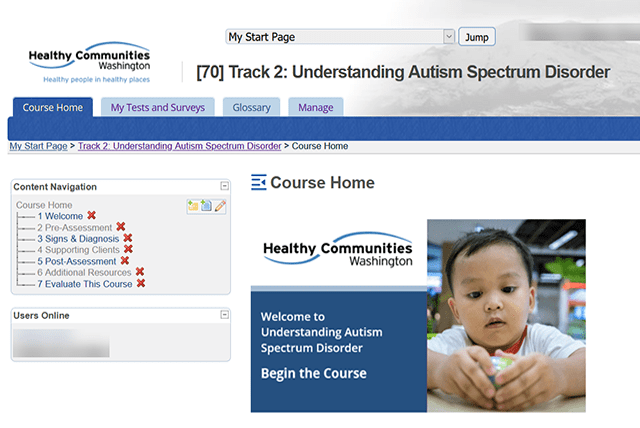A cohort-based course is an educational approach that can solve the problem of feeling disconnected when learning online. Even though we’re all connected to everyone all the time, remote training can still feel lonely.
Building a learning community with a cohort means you bring together learners who share similar interests, goals and objectives to complete the training collaboratively. Learners share learning schedules and deadlines rather than working on their own.
A community of learners in cohort-based courses (CBCs) can help participants feel like they belong, can boost their professional networks and encourage peer learning.
The flip side was the MOOC (mass online open course), which has been a popular way of training giant groups of people. But completion rates aren’t good for MOOCs. In fact, they’re very bad. One study cited in the publication Inside Higher Ed says that among all MOOC participants in the study, only 3.13 percent completed their courses in 2017-18. This included popular programs from MIT and Harvard.
With a group pushing them along, learners in cohorts have a much higher completion rate. That’s why creating cohort-based courses are such a successful way of structuring your online professional development.
When you invest in building online learning communities, you also build a tighter connection with the people who you’re training. As a bonus, you’ll find it can help manage the training of many learners, especially when they are completing competency-based training.
In this guide, we’ll explore the benefits of building cohort-based courses and explain how it works.
What Is a Cohort-based Course?
In simplest terms, a cohort-based course is a group of people who learn together.
This type of learning experience lets participants take part in a collective, collaborative learning environment centered around a given topic or subject. For example:
- A group of people who learn a new skill together, such as how to use a piece of equipment
- A collection of people who meet to tackle a problem, like practicing case studies in a Zoom call
- A team who goes through a multi-week competency-based training at the same time
The core idea of a cohort-based course is that it brings together individuals from the same demographic, who share common interests and goals, and invites them to engage in tasks that require collaboration and problem-solving. This strengthens the ties between participants and allows for lasting relationships to be forged.
A cohort-based course allows your organization to:
- Manage big groups of participants. This is helpful in case you have the capacity to handle 25 students at once, but 250 would be too many to manage.
- Group people together to guide them through a learning path. This is common when learners begin with basic knowledge and advance to more intensive learning.
- Provide learning opportunities throughout the year. Your agency’s hiring schedule might change depending on funding, the season, and other factors that mean people will enter your program at differing times.
How Does a Cohort-based Course Work?
Cohort-based courses are typically organized into small groups of participants and are supervised by a designated instructor or facilitator.
The group can vary between 8 and 25. You can have a smaller or larger cohort, but it’s less effective. If it’s too small, it’s difficult for the people to build a cohesive community. If it’s too large, some people will get left out or not participate much.
Throughout the course, participants do coursework at the same time. If it’s an asynchronous course, this could be every week learners complete the same module at the same time. If it’s synchronous, learners might meet with their instructor weekly in a face-to-face or online setting to discuss assignments and test out theories and concepts related to the topic of the course.
A simple schedule might look like this:
| Date | Topics |
| Before week 1, Monday-Friday | Registration |
| Week 1, Monday-Friday | Introduction module |
| Week 2, Monday-Friday | Coaching group meetings |
| Week 3, Monday-Friday | Practice knowledge |
In either case, at the end of the program, graduates receive an official certification for their successful completion of the cohort-based course.
Benefits of a Cohort-based Format
Cohort-based courses provide a number of benefits such as:
- Allowing for frequent interaction and feedback with an instructor and fellow learners. This means no one is sitting alone in a course wondering what to do. They can connect with others in the course to ask questions and share ideas.
- Delivering learning experiences that help participants reach goals. Remember, cohorts are grouped around a common goal. They use teamwork to help reach those goals together.
- Peer learning. Cohorts enable collaboration among peers for better peer learning opportunities. There’s real value to the experience and knowledge of everyone in a course, not just the facilitator.
- Building teamwork and collaboration skills. These soft skills come as a consequence of learning together. They’re outside the material that learners are studying together. The relationships that learners develop in the cohort can be carried outside the classroom too in professional networks.
- Providing a structure that makes it easy to plan. Deadlines are set at regular intervals, so it’s easy for everyone to schedule training around their own calendars.
Challenges of a Cohort-based Format
Although cohort-based courses provide many great benefits, there are also some potential challenges you should be aware of.
First, due to the structure of a cohort-based course and the need for consistent collaboration with peers, it can be difficult for learners to keep up if they fall behind the pace of the group. So while it’s easier to look at a calendar and pencil in meeting times before the training begins, it doesn’t take into account sickness, vacation time or other scheduling hiccoughs.
Learners may find they need to invest extra effort in keeping up with the deadlines established by cohorts in order to complete coursework on time.
Scheduling can be more work for the person planning the training program as well. Scheduling is at the core of any remote training program. You’ll have to look at holidays, conferences, vacations, and other competing events on the schedule that could impact participation.
When you’re ready to offer your course to your staff or other participants, think about their schedules too. A helpful strategy is to divide up the program year and your participants into rotating cohorts. That could look like this example for an 8-week program that’s spaced out.
First cohort: January 1- February 26
Second cohort: March 1- April 26
Third cohort: May 1- June 26
Fourth Cohort: July 1- August 26
Consider the above factors if you’re working out how many cohorts you have and how often you schedule them.
How To Build a Training Plan For Your Cohort-based Course
Planning is the key to a successful cohort. Follow these tips below, and then read our guide that includes Easy Tips for A Better Training Program.
- Decide on one program administrator. There should be one person who’s in charge of managing the training program. Some agencies make the mistake of purchasing a professional development package and then neglecting to manage it. So take time to hire or assign someone to be the touch person for the program.
- Choose the best delivery method for your team. How and where will your training take place? It might be remote, especially if your staff is still at home part or all of the time. If your organization is back at the office, you may consider in-person learning. Or, you can set up a blend of the two for an enriching experience.
- Offer the curriculum in the languages your team speaks. Language needs are an excellent reason for creating a learning cohort. Depending on your staff and possibilities, it’s worth exploring different languages in your course material. English is the default language for many courses, and your team might even speak English at work. But consider that learning may be easier for them in their native language.
- Encourage engagement and participation. A successful training program has an engaged group of learners. Without active participation from your team, the program simply won’t achieve the goals you’re after.
Want To Learn More About Cohort-based Courses?
If you think developing a cohort training model is the right route for you, contact Talance today for a free consultation. We can lend our expertise to you when it comes to building the right course or implementing a strategy that works.



